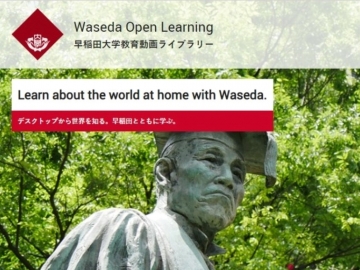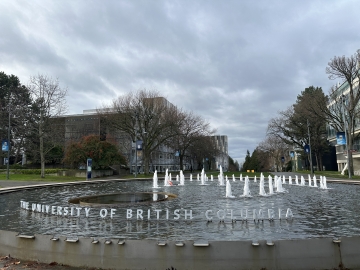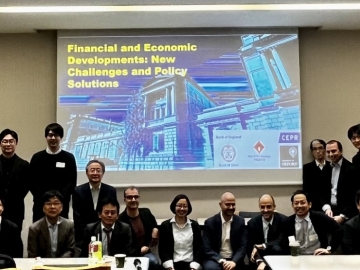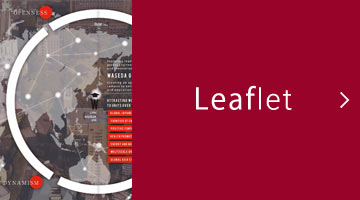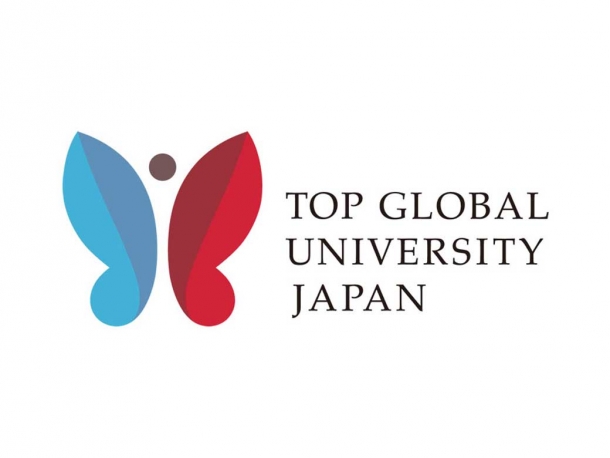University experience inspired popular YouTube channel, Nihongonomori
Kento Ogihara
September 2016 Waseda graduate
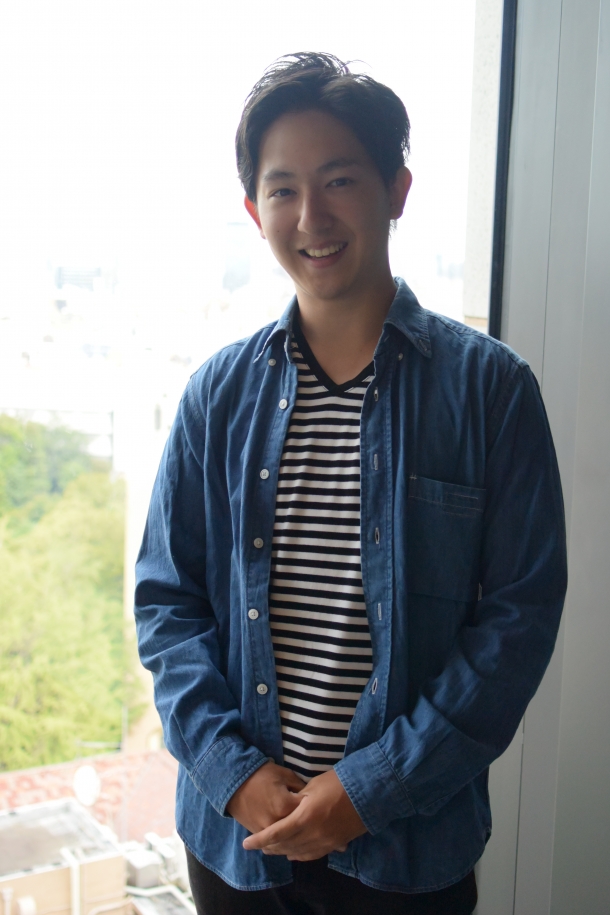
Nihongonomori, literally meaning “forest of Japanese language,” is a popular YouTube channel helping Japanese learners at all levels of fluency. What’s more, the content differs from conventional Japanese study materials, also offering lessons in Japanese slang, contemporary Japanese, and even Japanese dialects. Kento Ogihara, Waseda alumnus and one of the founders of Nihongonomori, spoke about how the YouTube channel started.
What is the story behind Nihongonomori?
When I was a student in EDESSA*, I used to teach Japanese to friends who hadn’t studied it before and help with different aspects of living in Japan, such as doing bureaucratic paperwork. Through this experience, I felt that there was more I could do to help such people. This became providing free Japanese language lessons on YouTube for those who couldn’t afford going to Japanese language schools. I began posting unedited videos, shot with an iPhone. However, even with such amateur content, I received messages from people thanking me and was excited by the viewers’ reactions. I started to gradually upgrade the content.
*EDESSA (English-based Degree Studies September Admission) is a program started in September 2010 at Waseda’s School of Political Science and Economics. EDESSA allows Japanese and international students to study together and obtain a Bachelor’s degree entirely in English.
https://youtu.be/3S-Y6PiKW-s?list=PLINFE8v4DOhuby4i66E_M_Hu60_4Vl5tV
What kind of challenges and struggles did you face in Nihongonomori?
The three things I struggled with were: maintaining the YouTube channel as a business, teaching correct Japanese, and creating interesting lessons.
I started Nihongonomori with a friend. In order to keep this project going, we felt that it needed to be a business, not a casual volunteer project. Because we wanted to keep this educational content free for people in developing countries, we found sponsors who would help us financially and gained income through YouTube advertisements. Although we did not have any specific target countries in mind, many viewers were from Southeast Asia, such as Indonesia and Thailand, where there is a strong presence of Japanese companies. It especially became a huge hit in Vietnam, and I believe the reasons behind this are the increasing numbers of YouTube and Facebook users in the country, along with the fact that so many people there study Japanese. From this success, we formed a partnership with local staff members and prepared introductory content in Vietnamese, aiming to gain more subscribers in Vietnam. One thing we struggled with was the budget. To expand our business, we needed more funding. Yet, we were only university students, so many companies were suspicious of us at first. We visited many Japanese language schools and other businesses to explain our intentions and ask for support. Most places wouldn’t even listen to us, but we kept going. As we made repeated visits to related businesses and organizations, they eventually understood what we were trying to do. In the end, we gained many supporters.
Secondly, I had no professional experience teaching Japanese or background in Japanese language pedagogy. To make up for this, I attended Japanese lessons at Waseda’s Center for Japanese Language to learn how to explain rules in the Japanese language that native speakers use without thinking, such as the difference between case particles 「は(ha)」and「が(ga)」. I made sure to spend enough time studying Japanese linguistics.
Thirdly, something I constantly thought about was creating engaging lessons so that the viewers wouldn’t get bored. We incorporated skits of real-life situations in the lessons so that the viewers would stay interested and understand how language is used in context, which proved to be successful.
What are some successes you have experienced with Nihongonomori?
Every time we posted a new video, someone would leave a comment thanking us, which became our motivation. In addition, when we announced the Nihongonomori event in Vietnam via Facebook, over 700 people attended, ranging from 3 to 60 years old. It was really something to be welcomed by 700 viewers who study Japanese through our videos.
Why did you choose EDESSA? What were your four years in the program like?
My family moved to China when I was in 8th grade and I went to international school there. When I thought about where I wanted to go for college, I knew I wanted to go to a Japanese university but also utilize the English skills I had gained. EDESSA was a great fit for me since I could complete my undergraduate degree entirely in English. Another attractive feature of this program is the small classes, allowing you to engage in meaningful discussions and become friends with peers from different countries around the world. Because I also took classes taught in Japanese and served as the representative of BIES (an official student club which brings together students from EDESSA and the Japanese program), I got to meet many people from various backgrounds.
As a first-year student, I also had the opportunity to work as an intern at an accounting firm in China. Although there were times when I became keenly aware of my shortcomings as a businessperson at the time, that valuable learning experience early on influenced the way I spent my time at Waseda.
Finally, tell us about your overall experience at Waseda.
There is a nurturing atmosphere at Waseda University, which encourages students to take on new challenges. With its liberal climate and global community, so many different opportunities are available here: your studies, starting a business, networking with alumni, or taking part in club activities are all great examples. My four years at Waseda were very busy, but I learned to manage my time wisely, so I was able to allocate time for myself and enjoy traveling, too. I now work for an international consulting firm, and I am looking forward to experiencing different things in different fields. In the future, I would like to expand on what I did as a student and do more hands-on business. Because of the opportunities at Waseda University, I was able to challenge myself while studying many things and meeting so many people. I am who I am today because of all these experiences.
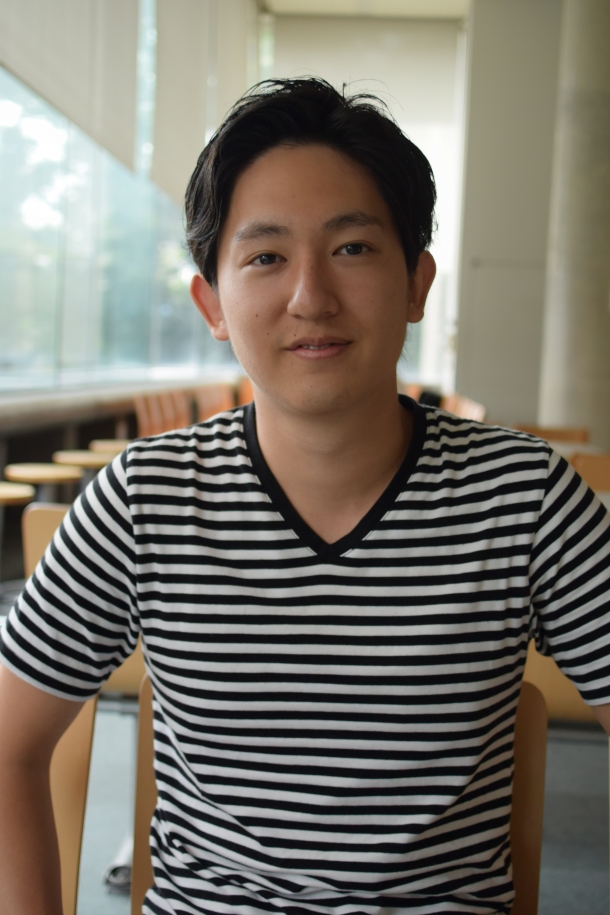
Profile
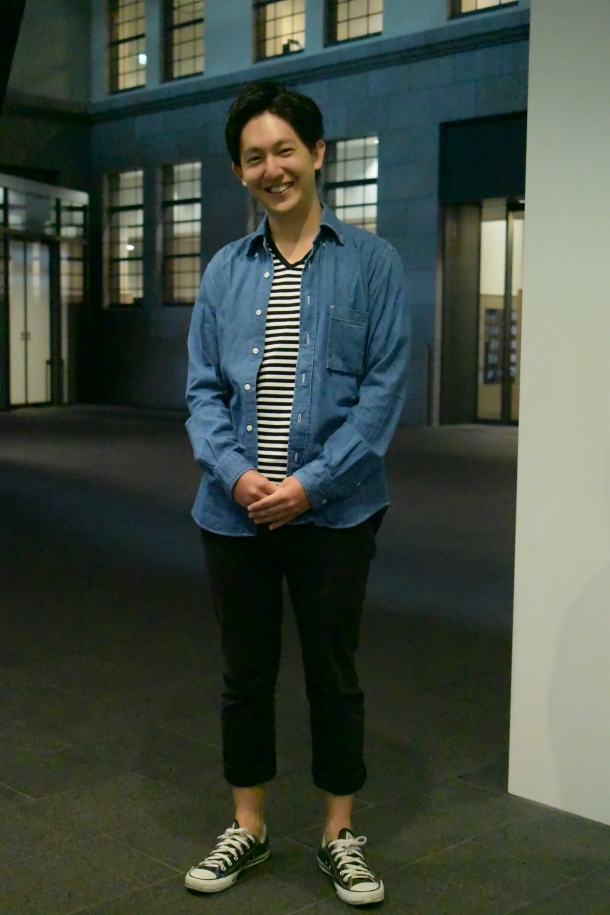
Kento Oghiara is from Aichi Prefecture. He came to Waseda from the Suzhou Singapore International School in China. Since graduating in Fall 2016, he has been working for an international consulting firm, a position he landed after attending a career event in Boston (USA) during his fourth year.
Nihongonomori
Website: http://nihongonomori.com
YouTube:https://www.youtube.com/user/freejapaneselessons3
